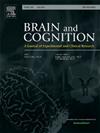Effects of regional white matter hyperintensities and β-amyloid on domain-specific cognition and progression to dementia
IF 1.4
3区 心理学
Q3 NEUROSCIENCES
引用次数: 0
Abstract
White matter hyperintensities (WMHs) and cerebral β-amyloid (Aβ) have been characterized as clinically significant biomarkers associated with greater cognitive decline and incidence of Alzheimer’s Disease (AD) dementia. However, it remains unclear how their regional manifestations co-contribute to domain-specific cognition and dementia onset. We investigated 200 cognitively normal (CN) and 523 individuals with mild cognitive impairment (MCI). We first quantified regional WMHs and Aβ accumulation in the four cerebral lobes. Next, we evaluated the effects of both WMHs and Aβ in each lobe on memory, executive function (EF), language, and visuospatial function. We used Cox proportional hazard models to determine the contributions of both regional WMHs and Aβ to dementia progression. In CN individuals, greater WMHs in parietal and temporal regions were associated with poorer EF beyond Aβ. In MCI individuals, greater Aβ burden in all lobes were associated with poorer memory, EF, and language abilities beyond WMHs. Lastly, both greater occipital WMHs and Aβ predicted progression to dementia. Temporo-parietal WMHs may drive early decline in EF beyond regional Aβ, while occipital WMHs play a critical role in disease progression to AD dementia beyond regional Aβ, highlighting the complex interplay of regional WMHs and Aβ on domain-specific cognitive and clinical function.
区域白质高信号和β-淀粉样蛋白对区域特异性认知和痴呆进展的影响
白质高强度(WMHs)和大脑β-淀粉样蛋白(Aβ)已被表征为与认知能力下降和阿尔茨海默病(AD)痴呆发生率相关的临床重要生物标志物。然而,目前尚不清楚它们的区域表现如何共同促进领域特异性认知和痴呆的发病。我们调查了200名认知正常(CN)和523名轻度认知障碍(MCI)患者。我们首先量化了四个脑叶的区域wmh和Aβ积累。接下来,我们评估了每个脑叶中wmh和Aβ对记忆、执行功能(EF)、语言和视觉空间功能的影响。我们使用Cox比例风险模型来确定区域wmh和Aβ对痴呆进展的贡献。在CN个体中,顶叶和颞叶区域较大的wmh与较差的EF相关。在轻度认知损伤个体中,所有脑叶中较大的β负荷与较差的记忆、EF和语言能力相关。最后,大枕部WMHs和Aβ预测痴呆的进展。颞-顶叶wmh可能会导致EF在a β区域以外的早期下降,而枕部wmh在a β区域以外的AD痴呆的疾病进展中起关键作用,突出了区域wmh和a β在特定区域认知和临床功能中的复杂相互作用。
本文章由计算机程序翻译,如有差异,请以英文原文为准。
求助全文
约1分钟内获得全文
求助全文
来源期刊

Brain and Cognition
医学-神经科学
CiteScore
4.60
自引率
0.00%
发文量
46
审稿时长
6 months
期刊介绍:
Brain and Cognition is a forum for the integration of the neurosciences and cognitive sciences. B&C publishes peer-reviewed research articles, theoretical papers, case histories that address important theoretical issues, and historical articles into the interaction between cognitive function and brain processes. The focus is on rigorous studies of an empirical or theoretical nature and which make an original contribution to our knowledge about the involvement of the nervous system in cognition. Coverage includes, but is not limited to memory, learning, emotion, perception, movement, music or praxis in relationship to brain structure or function. Published articles will typically address issues relating some aspect of cognitive function to its neurological substrates with clear theoretical import, formulating new hypotheses or refuting previously established hypotheses. Clinical papers are welcome if they raise issues of theoretical importance or concern and shed light on the interaction between brain function and cognitive function. We welcome review articles that clearly contribute a new perspective or integration, beyond summarizing the literature in the field; authors of review articles should make explicit where the contribution lies. We also welcome proposals for special issues on aspects of the relation between cognition and the structure and function of the nervous system. Such proposals can be made directly to the Editor-in-Chief from individuals interested in being guest editors for such collections.
 求助内容:
求助内容: 应助结果提醒方式:
应助结果提醒方式:


